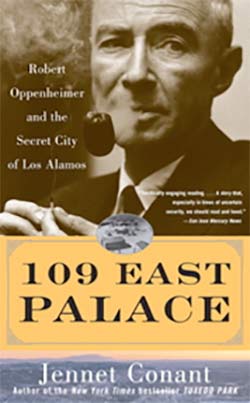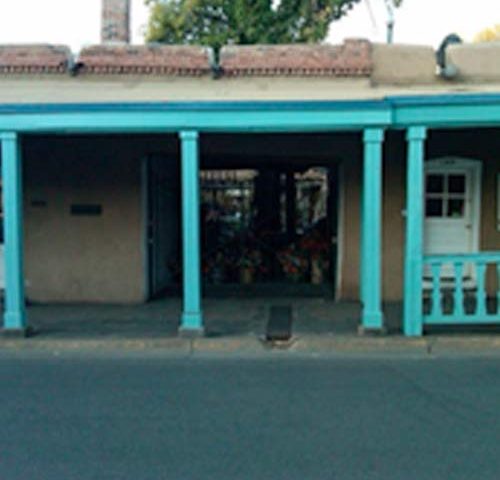An Unlikely Portal to the Future

What Do You Know About the Father of the Nuclear Age?
October 6, 2017
World War II Treasures Await Your Family
October 27, 2017The instructions said to meet at 109 East Palace in Santa Fe, New Mexico. There were few details about this place except that was where the journey would begin. This small nondescript office was off the beaten path, and many walked right past it. Yet a steady stream of scientists, engineers and army officials converged there briefly to begin their secret work on Project Y.
Seventy-four years later, it was still easy to walk past this unassuming Santa Fe style doorway. I know that to be true as I walked past that door many times over the past three years. Each August, as I made my annual expedition to volunteer at the Santa Fe Indian Market, I was unaware of its significance. Its humility belied the reality that this was the entrance into the atomic age.
Then and now, it’s easy to be distracted by the colorful array of Southwestern shops scattered along Palace Avenue and the surrounding streets. The bold displays of Indian art and finely-crafted turquoise jewelry tempt the eye and entice the visitor to enter the shops through the often massive doorways. While the ordinary facade of 109 East Palace can’t complete with these nearby exotic places, its bland appearance functioned as a security guard during the war. Today this historic door’s entrance is only blocked by our lack of knowledge about this time and place.

While this location is memorialized by a small plaque, there is a much larger tribute in Jennet Conant’s book, 109 East Palace, Robert Oppenheimer and the Secret City of Los Alamos. Her book has brought to life the tiny details and the large landscape of the secret work of Los Alamos. Each page provides insight into the key individuals who helped create the first atomic bomb. Robert Oppenheimer, Enrico Fermi, Hans Bethe, Niels Bohr and their families made Los Alamos their home. While each story was different as were their contributions, they all began their journey at the same place, 109 East Palace Avenue.
Another colorful personality was a young widowed mother, Dorothy Scarritt McKibbin. She was the front person. She ran the office at 109 East Palace and literally raced from one problem to the next. But with aplomb and optimism, she always found a solution. She was in fact the glue that kept the fabric of “The Hill’s” unconventional secret life from fraying and falling apart. She was also Robert Oppenheimer’s most trusted supporter.
There were so many twists and turns for these nuclear energy pioneers, but their stories kept pulling me forward. I applaud Jennet Conant for her interest in this slice of history and for delivering such powerful personal stories. She too was personally connected. James B. Conant, a brilliant research chemist, administrator of the Manhattan project and President of Harvard, was her grandfather. In spring of 1945 to The New York Times, William L. Laurence, James B Conant remarked, “They won’t believe you, when the time comes that this can be told. It is more fantastic then Jules Verne.”
The story of Robert Oppenheimer and the secret city of Los Alamos has now been told in a riveting fashion, and I encourage you to read this notable historic account. I am eager to return to Santa Fe next August to explore this area and its remarkable story. With fresh eyes I will begin my journey at 109 East Palace Avenue.


